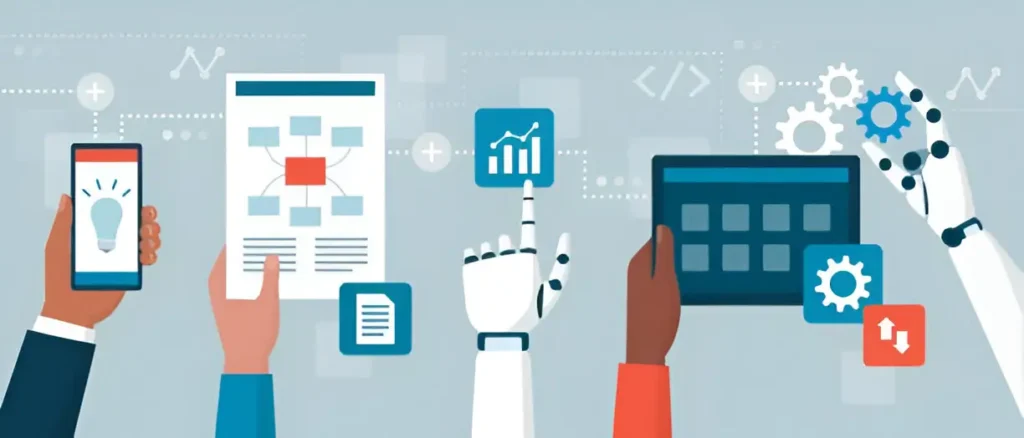For years, spreadsheets have been the backbone of finance teams everywhere. Budget forecasts, expense tracking, P&L reviews, all lovingly crafted, cell by cell. And for a long time, they did the job.
But what got you here won’t get you where you need to go next.
The pace of business has changed. Decision‑makers want answers today, not next month. Markets are volatile, and waiting for someone to reconcile a stack of CSVs just isn’t good enough anymore.
That’s why finance teams are making the leap, from static spreadsheets to smarter, automated systems. Let’s look at why this shift is happening, what it means for your team, and how it opens the door to sharper financial analysis on top of your accounting data.
Why Spreadsheets Can’t Keep Up Anymore
No doubt, spreadsheets are powerful. They’re flexible, familiar, and cheap. You can build just about any kind of financial model or report if you’re willing to put in the work.
But as businesses grow, a few problems start to creep in:
- Errors multiply. One bad formula can ripple through your model without you noticing.
- Version control becomes a nightmare. “Final_Final_v3.xlsx” isn’t exactly a scalable system.
- You lose time on low‑value work. Manual data entry, reconciling mismatched figures, chasing down backups, it eats hours you could spend analyzing and advising.
- Lack of transparency. Digging into why a number changed often means scrolling through tabs and digging through cell references.
Spreadsheets are still great for modeling. But they’re a poor foundation for a fast‑moving, insight‑driven finance function.
What Accounting Automation Really Does
When people talk about accounting automation, they’re referring to software that takes over repetitive, rules‑based tasks and frees up finance teams to focus on higher‑value work. These systems connect to your banks, payment platforms, payroll providers, and other data sources, then handle the mechanics behind the scenes, faster and more reliably than a human could.
Here’s what most modern automation platforms typically manage:
- Importing transactions directly from banks, credit cards, and payment processors, so no more downloading CSVs or typing into ledgers
- Categorizing expenses and income streams automatically based on predefined rules and past behavior
- Reconciling accounts in real time to flag discrepancies and reduce closing delays
- Generating standard financial statements like P&L, balance sheets, and cash flow reports at the click of a button
This eliminates much of the manual busywork and cuts the risk of human error.
But here’s the important part: automation doesn’t replace your accounting function or your judgment. Numbers still need to be understood, interpreted, and acted on by people who know the business. What it does is give you better tools to work with, so you can spend less time collecting data and more time making decisions.
For example, Bunker’s accounting software doesn’t just stop at automating the basics; it also helps you analyze your numbers, spot trends, and uncover insights you can actually act on. For modern finance teams, automation is just the starting point of a much bigger opportunity.
Beyond Bookkeeping: Why Automation Matters for Analysis
Automating the accounting layer is just step one. The real opportunity lies in what you can do once the data is clean and reliable. Once your accounting processes are automated, you can focus on questions that actually move the business forward:
- How are we performing against budget?
- Why did this variance occur?
- Where are costs creeping up?
- Which customers or vendors are driving the biggest changes?
Here’s how smarter systems, built on automated accounting, enable faster, more accurate insights:
- Faster closings mean faster decisions. A shorter close cycle gives you more runway to analyze and act before the next period.
- Clean, reconciled data. Automation standardizes and removes errors, so you’re not second‑guessing your reports.
- Transaction‑level transparency. Instead of chasing details, you can drill into individual vendors, customers, or invoices with a click.
- Real‑time visibility. You don’t have to wait for month‑end to see whether you’re on track or over budget.
This is where finance teams move beyond just “closing the books” and start delivering actionable insights.
Why Businesses Are Making the Shift Now
So why is this shift away from spreadsheets and toward automation‑plus‑analysis accelerating? This isn’t just hype. Nearly 60% of all firms (and 85% of large companies) implemented automation in the last year. And 65% now call it a strategic priority. Those numbers reflect how urgent and impactful this transformation really is.
Several forces are driving this change:
- Increased complexity. Even small businesses are dealing with more entities, more currencies, and more transactions than ever before.
- Higher expectations. Leadership wants insights faster, with more detail and more accuracy.
- Talent pressure. Good finance talent doesn’t want to spend their days manually reconciling spreadsheets. They want to contribute strategically.
- Competitive edge. The businesses that understand their numbers in real time have an edge in making quick, data‑driven decisions.
In short, automation helps you keep pace, not just with compliance requirements, but with competitors who are already making better, more data‑driven decisions.
If you’re ready to move beyond the grind of manual work and unlock the true value of your financial data, it’s time to think bigger than just bookkeeping. Automation is the foundation, but the real win is in the insights it enables.
How to Start Moving Away from Manual Spreadsheets
You don’t have to abandon spreadsheets overnight. Instead, be strategic about which processes to automate first, and where to build smarter analysis tools on top.
1. Assess Your Current Workflows
Look at where your team spends the most time. Which processes are repetitive or error‑prone? Start there.
2. Modernize Your Core
If you’re not already using a cloud‑based accounting platform like QuickBooks, Xero, or NetSuite, now’s the time. These systems already have automation at the ledger level.
3. Layer on Analytics
Once your data is clean and automated, build analysis on top. This is where you move beyond compliance reporting and into meaningful, drill‑down insights — the kind Bunker’s accounting software is designed to support.
4. Keep Spreadsheets in the Mix, Smartly
Spreadsheets aren’t going anywhere. Use them where they shine, modeling and scenario planning, while letting automation handle the grunt work.
Final Thoughts
The shift from spreadsheets to smarter systems isn’t just about speed. It’s about giving finance teams the tools to deliver insights that actually guide decisions.
Automation frees up time, reduces risk, and ensures clean, reliable data. But clean data alone won’t tell you where to focus or what to fix. That’s where analysis, built on top of automation, makes the difference.
You can keep patching reports together manually, or you can spend your time where it matters: understanding what drives performance and helping the business move forward.
With the right tools, like Bunker’s accounting software, you can finally focus on what really counts.


